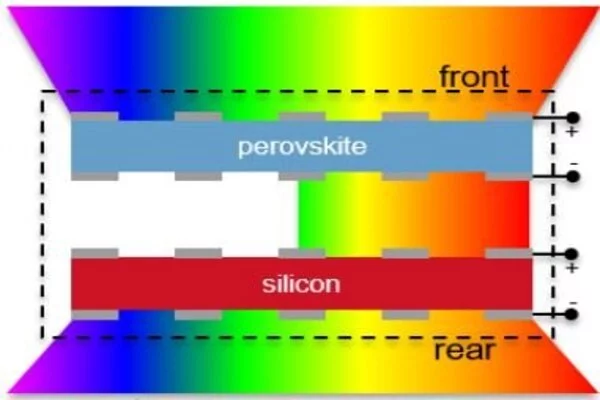Bifacial perovskite solar cells are an exciting advancement in photovoltaics. Traditional solar cells only capture sunlight from the front side, whereas bifacial solar cells capture light from both the front and back sides. As it can capture and convert sunlight that is reflected off surfaces or passes through the cell, this has the potential to significantly increase the overall efficiency of the solar cell.
According to scientists at the US Department of Energy’s National Renewable Energy Laboratory (NREL), a bifacial perovskite solar cell, which allows sunlight to reach both sides of the device, has the potential to produce higher energy yields at lower overall costs.
A bifacial solar cell’s dual nature allows it to capture direct sunlight on the front and reflected sunlight on the back, allowing this type of device to outperform monofacial counterparts.
“This perovskite cell can operate very effectively from either side,” said Kai Zhu, senior scientist at NREL’s Chemistry and Nanoscience Center and lead author of a new paper published in the journal Joule titled “Highly efficient bifacial single-junction perovskite solar cells.” Qi Jiang, Rosemary Bramante, Paul Ndione, Robert Tirawat, and Joseph Berry from NREL are his co-authors. Co-authors from the University of Toledo also contributed.
This perovskite cell can operate very effectively from either side. Simulations guided the design of the bifacial cell, and without them, the researchers would have had to experiment with cell after cell to determine the ideal thickness.
Kai Zhu
Previous bifacial perovskite solar cell research has produced devices deemed inadequate in comparison to monofacial cells, which currently have a record efficiency of 26%. A bifacial cell, according to the NREL researchers, should have a front-side efficiency comparable to the best-performing monofacial cell and a similar back-side efficiency.
The researchers were able to create a solar cell with similar efficiency under illumination from both sides. The front illumination’s efficiency was measured in the lab and exceeded 23%. The efficiency of the back illumination was approximately 91%-93% of that of the front.
Before constructing the cell, researchers relied on optical and electrical simulations to determine the necessary thickness. The perovskite layer on the front of the cell had to be sufficiently thick to absorb most of the photons from a certain part of the solar spectrum, but a perovskite layer that is too thick can block the photons. On the back of the cell, the NREL team had to determine the ideal thickness of the rear electrode to minimize resistive loss.

According to Zhu, simulations guided the design of the bifacial cell, and without them, the researchers would have had to experiment with cell after cell to determine the ideal thickness. They discovered that the ideal thickness for a perovskite layer is around 850 nanometers. In comparison, a human hair is about 70,000 nanometers long.
Bifacial perovskite solar cells take advantage of the fact that some of the sunlight that reaches the back side of the solar cell can also be absorbed and converted into electricity. This is accomplished by using a transparent or semi-transparent material on the back side of the solar cell that allows light to pass through and reach the perovskite absorber layer.
The researchers placed the cell between two solar simulators to assess the efficiency gained from bifacial illumination. The front side received direct light, while the back side received reflected light. The cell’s efficiency increased as the ratio of reflected light to front illumination increased.
While researchers estimate that a bifacial perovskite solar module will cost more to produce than a monofacial module, bifacial modules may end up being better financial investments over time because they generate 10%-20% more power.
The research was funded by the US Department of Energy’s Solar Energy Technologies Office.
















